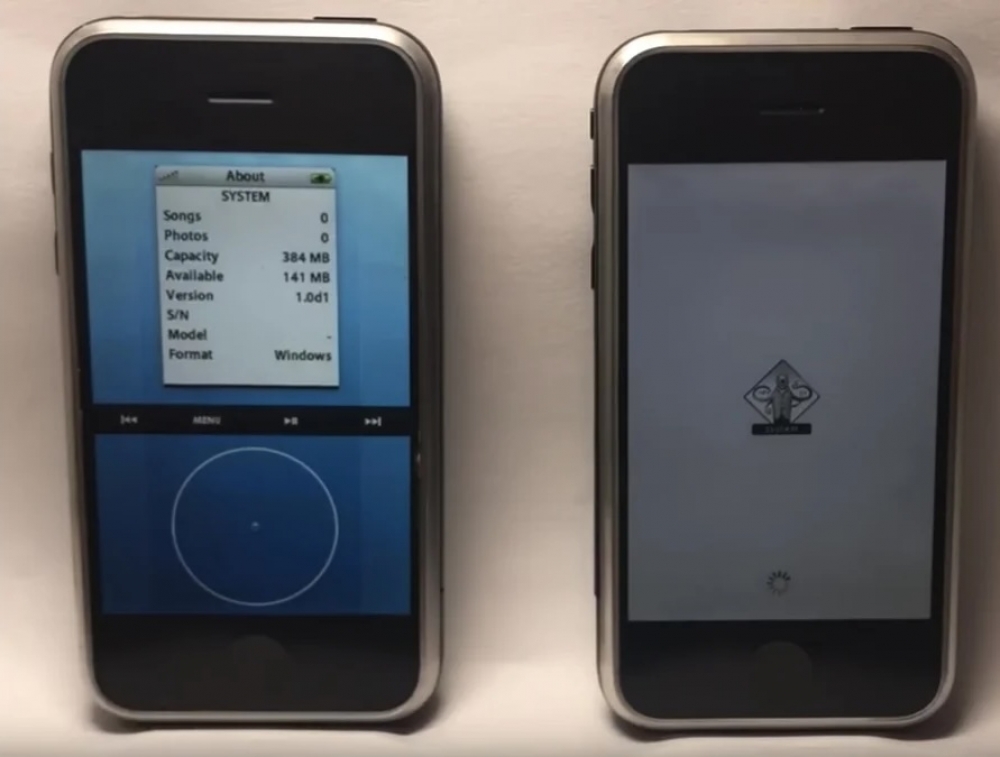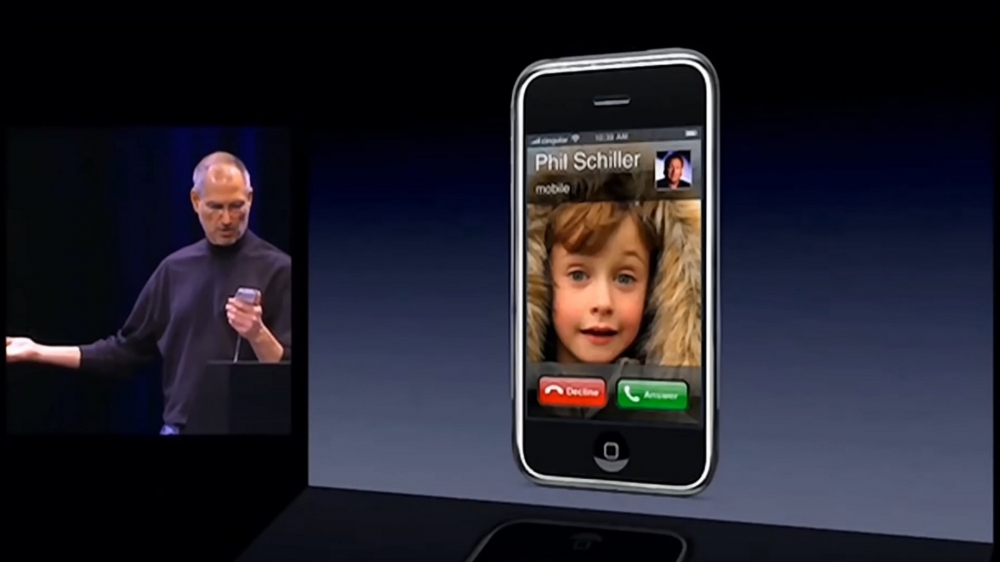Secrets Revealed: Surprising Facts About the Creation of the Apple iPhone
- Uncover the hidden struggles behind Apple's groundbreaking iPhone.
- Explore the untold stories of innovation and perseverance.
- Learn how a simple idea revolutionized an entire industry.
The path to creating the iPhone was filled with secrecy, competition, and innovation. This article delves into the untold stories of alternative iPhone prototypes and the high-stakes environment that defined Apple's journey to revolutionize the mobile phone industry.
The Early Days of Development
In the hours before Apple released its first iteration of the iPhone on June 29, 2007, fans were already lining up to buy one. They hadn't yet held an iPhone, but they'd seen the commercials. They loved the blank slate of the touch screen and the uncluttered interface. Many of them already owned an iPod, which had changed the way they consumed music. They sensed the iPhone was transformative, drawn by its style, ergonomics, and the promise that it would "reinvent the phone," as Steve Jobs boasted six months earlier.
 Image credit: Smithsonian Magazine
Image credit: Smithsonian Magazine
The Big Demo
With Jobs now deeply invested, the focus turned to perfecting the iPhone prototype. A major milestone was the "big demo" at the Top 100 meeting, a secretive gathering of Apple's top one hundred employees where future products and strategies were presented. "We had this 'big demo' — that's what we called it," says Bas Ording. This presentation had to be as meticulously crafted as a public-facing product launch. The goal was to showcase the potential applications, such as a calendar, email, and media playback, on the new device.
Brutal Yet Exhilarating Work
The team worked relentlessly to make the prototype as real and concrete as possible. "Every step on this journey was just making it more and more concrete and more real," Christie explains. The process involved hacking the latest iPod model to visualize how the applications might look. The demo included tapping on the mail app and web browser, giving a sense of the user experience. Christie describes the work as "brutal, grueling," but also "exhilarating." Team members often stayed in hotel rooms or crashed at his house to avoid long commutes. The dedication paid off, with the Top 100 presentation being another smash success.
 Image credit: 9to5Mac
Image credit: 9to5Mac
The iPod Phone: An Early Contender
While the touch interface team toiled away, Tony Fadell's team was working on an alternative prototype: the iPod phone. Fadell saw the potential of combining the iPod with phone capabilities, leveraging the brand's established success. "Take the best of the iPod and put a phone in it," Fadell says. "So you could do mobile communications and have your music with you." The iPod team, initially unaware of the HI group's developments, began prototyping by bolting a phone onto an iPod. Andy Grignon, a member of the team, recalls, "We were gonna build what everyone thought we should build at the time: Let’s bolt a phone onto an iPod."
A Pivotal Moment: Richard Williamson's Decision
Richard Williamson, the engineer behind Safari's WebKit framework, found himself at a career crossroads. Burned out and considering a move to Google, he was invited by Jobs to stay at Apple. "Don’t leave," Jobs implored. "We’ve got a new project I think you might be interested in." Despite initial skepticism about the feasibility of the project, Williamson was convinced by Jobs' vision and decided to stay, ultimately becoming an advocate for building a device to browse the web.
 Image credit: Mashable
Image credit: Mashable
Competing Visions: P1 vs. P2
Apple's phone project soon diverged into two competing tracks: P1, the iPod phone, and P2, a hybrid of multitouch technology and Mac software. This "bake-off" created political strife but also drove innovation. The Human Interface designers worked on both projects, trying to turn the Ps into viable products.
The Rokr Debacle
The Motorola Rokr, an early attempt to integrate iTunes with a phone, was a disaster. Jobs' dissatisfaction with the Rokr's performance during its 2005 launch spurred him to push harder for an Apple-built phone. "I’m sick and tired of dealing with bozo handset guys," Jobs reportedly told Fadell after the Rokr's failure, leading to a renewed focus on the iPhone.
 Image credit: Apple Inc. Motorola (iTunes Phone)
Image credit: Apple Inc. Motorola (iTunes Phone)
The Purple Project
The iPhone project, code-named Purple, became shrouded in secrecy. Scott Forstall, who managed the iPhone software program, described it as the "Purple Dorm," a highly secure area with restricted access. The team even put up a "Fight Club" sign, emphasizing the project's confidentiality.
The Challenge of Courting Steve Jobs
Introducing Steve Jobs to new ideas, and getting him to buy into initiatives that weren't his own, required careful management and timing. He was exacting and mercurial and prone to being dismissive. But a group of Apple engineers working independently were prototyping a technology they thought might be useful enough to eventually present to Jobs. It was a form of direct manipulation: touchscreens. "They had hacked together this rig to make this sort of prototype of touchscreen technology work," Merchant says. "It was really the size of a table. They were just really kind of trying to experiment with this whole brand new paradigm."
They knew there was a right way to approach Jobs with this stuff and there was a wrong way, and you had to, sort of very strategically roll it out and give it to the right person to give it to him on the right day when he was in the right mood.
Jonathan Ive: The Key Intermediary
They found their intermediary in Apple's design chief, Jonathan Ive. Ive loved the touchscreen technology. "He thought it was the future," says Merchant. "And he said, 'Let me bring it to Jobs when he is in a good mood, when, you know, the time is right.'" Ive was one of Jobs' closest collaborators and the two were intimate friends. But when he unveiled the project, Jobs wasn't impressed. "Jobs said 'Meh!" And just kind of, you know, wrote it off," Merchant says. Ive was surprised and disappointed. But Jobs kept thinking about what he'd seen until he wheeled back, embraced the technology, and put his mark on the project. "Sure enough, Jobs came around," says Merchant "He thought about it some more. He asked to see the demo again and he said, 'OK, this is pretty cool.' And then fast forward a couple of weeks, a couple of months, and he loves it. And now he is like, 'Oh, you know what? Multi-touch? Yeah, I invented that.'"
Protecting the iPod
By 2004, some of the regulatory issues around mobile phones that had earlier vexed Jobs were easing. The other huge incentive for Apple to produce a phone was the threat that other companies might offer a mobile phone that played music, cutting into the sales of the iPod. "Once you could put music on a cell phone, even if the cell phone was lame, consumers would start thinking, 'Well do I really want to have two things in my pocket?'" "The iPod was, at the time, Apple's biggest marquee product. It was their cash cow," says Merchant. That brought urgency to the project.
The Secretive and Expensive Project
Engineers were recruited from other parts of the company to find ways to shrink and fine-tune the touchscreen technology, meld it with an operating system, and gild it onto a sleek device. It was an expensive, paranoid, and secretive project, and no one who was approached to work on it was completely sure what they were being asked to do. "They knew almost nothing," says Merchant. "Their boss was knocking on their door and saying, 'Excuse me, do you have a second? I have an exciting opportunity for you.'" "'This project is going to demand all of your time. You're going to have to work around the clock, you're going to work harder than you've ever worked before. And I cannot tell you what it is and you have to tell me whether or not you're on board today.'"
A Brilliant, Anonymous Team
It took two-and-a-half years and an enormous toll on the team. "[Those years] were brutal," says Merchant. "They were really stressful times and people were working around the clock, sometimes sleeping in this so-called purple dorm. Dirty laundry was piling up, trash was piling up. It stunk." "Tensions were running high. People were missing holidays, missing their children's birthdays. And it got so intense that I've had some of these engineers tell me that the iPhone is the reason that I'm divorced." "So it really created this sort of vortex; 'a soup of misery' is how one of the engineers described it, just non-stop craziness."
 Image credit: CNN
Image credit: CNN
The iPhone's Impact and Legacy
In the end, hundreds of designers and engineers navigated the emotional stress and corporate pressure to help produce the device that revolutionized the smartphone. Fans loved it. Not all the reviews were raves, and the full potential of the iPhone, the billions of possibilities unleashed when Apple launched the App Store, was yet to be seen. But the iPhone was an instant success. When Apple was awarded a patent for the original device, there were only 14 people listed as designers. How did the others feel about their anonymity given the demands of the project? "I think they were OK with it at the time," says Merchant. "Now, 10 years later, I think a lot of people are coming around to the idea that maybe it would be nice if this achievement could be recognized as sort of the fuller, more complex undertaking that it was, if only because that's just the truth about how innovation and invention happens. It takes teams, it takes cooperation, it takes a lot of people, more people than we can even perhaps comprehend." But Merchant says most were aware of what they were getting into. "You knew, by signing on to work there, that that was a possibility, that you would just, sort of, be working under Jobs' shadow, and [that] he wasn't going to divulge any of the details or the names or the teams that really made this possible."
 Image credit: Apple Inc.
Image credit: Apple Inc.
The Journey Continues: iPhone 3G and Beyond
The success of the original iPhone set the stage for further innovation. Apple continued to refine its smartphone technology with the introduction of the iPhone 3G in 2008. This new model brought 3G network capabilities, making mobile internet browsing faster and more accessible to users worldwide. The App Store, launched concurrently, opened up a new era of mobile applications, allowing developers to create and distribute apps directly to iPhone users. This ecosystem of apps further cemented the iPhone's position as a revolutionary device, not just for communication but for entertainment, productivity, and more.
The Legacy of Innovation
Since its debut, the iPhone has undergone numerous iterations, each pushing the boundaries of what a smartphone can do. From the introduction of Siri, Apple's voice assistant, to the emphasis on augmented reality with ARKit, Apple continues to innovate with each new generation. The iPhone's impact extends beyond technology, influencing design trends, consumer expectations, and even shaping global markets.
Conclusion
The story of the iPhone is one of vision, perseverance, and innovation. It began as a challenge to the status quo of mobile phones and evolved into a cultural icon that defines the smartphone industry today. Behind every feature, every design choice, and every launch, there are untold stories of dedication and creativity from the teams at Apple who worked tirelessly to make it all possible. As we look back on the journey from that first "big demo" to the global phenomenon it is today, one thing is clear: the iPhone is not just a device, but a testament to the power of bold ideas and the relentless pursuit of excellence.
Recommended by the editors:
Thank you for visiting Apple Scoop! As a dedicated independent news organization, we strive to deliver the latest updates and in-depth journalism on everything Apple. Have insights or thoughts to share? Drop a comment below—our team actively engages with and responds to our community. Return to the home page.Published to Apple Scoop on 2nd July, 2024.
No password required
A confirmation request will be delivered to the email address you provide. Once confirmed, your comment will be published. It's as simple as two clicks.
Your email address will not be published publicly. Additionally, we will not send you marketing emails unless you opt-in.